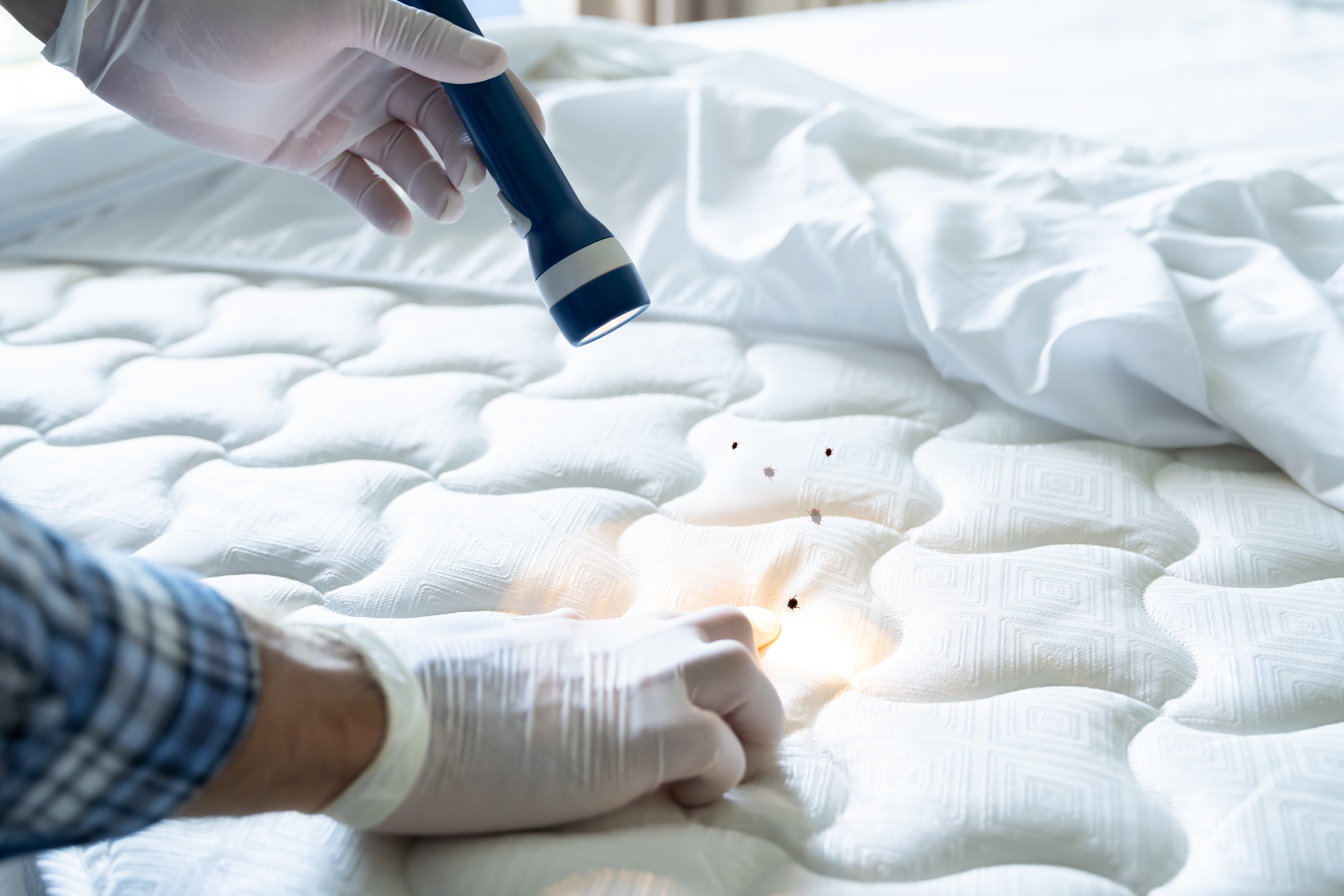How to Check for Bed Bugs When You Travel

It’s August, which means many families are making the most of the last weeks of summer vacation, and many college students are preparing to move back into dorms or off-campus housing. Whether you’re checking into a beachfront hotel, a mountain lodge, or a campus apartment, one thing remains the same: vigilance against bed bugs is essential.
Bed bugs can be found in accommodations of any price point or star rating—from budget motels to luxury suites costing thousands per night. They can also hitch a ride into college housing during move-in season. At Viking Pest Control, we’ve seen it all, and we know how important it is to learn how to check for bed bugs when you travel to new destinations.
What Do Bed Bugs Look Like?
Bed bugs are small, mahogany-brown insects roughly the size of an apple seed when fully grown. Younger bed bugs, called nymphs, are tan in color until they take their first blood meal. They’re flat, which helps them slip into cracks and crevices as thin as a business card.
Because they feed exclusively on blood, bed bugs spend most of their lives hiding near their food source—waiting to emerge at night for a meal.
Do Fancy Hotels Get Bed Bugs?
Yes. Bed bugs don’t care about the price of the room or the hotel’s reputation. Even the most exclusive resorts can develop issues from time to time. The same goes for student housing; bed bugs don’t care if the building is brand-new or decades old.
When researching hotels or campus housing:
- Read reviews carefully.
- A single mention of bed bugs might not be cause for alarm, but repeated reports over time should raise concern, especially if the dates are recent and near each other.
- Search the location’s name alongside the words “bed bug” for more insight.
 How to Check for Bed Bugs in a Hotel or Dorm Room
How to Check for Bed Bugs in a Hotel or Dorm Room
When you first enter:
- Note any odors. A strong chemical smell could mean the space was recently treated.
- Know where to look. In hotels, mattresses are less common hiding spots due to frequent linen changes. In dorms, however, mattresses can be prime real estate for bed bugs if not properly inspected or encased.
Inspect thoroughly, including behind and beneath furnishings. Focus your inspection on:
- Headboards
- Bed frames
- Nightstands and furniture within 6 feet of the bed
- Upholstered furniture
- Baseboards and wall fixtures
Look for:
- Fecal spots: Pepper-like stains.
- Eggs and egg cases: Cream-colored, about 1mm long.
- Shed skins: Papery remains from molting bed bugs.
- White residue: May indicate previous chemical bed bug treatments (heat treatments leave no residue).
Tip: A small flashlight and magnifier can make inspection easier.
What to Do If You Find Bed Bugs
If you discover a bug:
- Take a clear picture and then show it to staff or maintenance.
- Keep a sample bug if possible, this may help if you need to recover costs for treatment later.
Preventing Bed Bugs from Coming Home
If you think you’ve been exposed:
- Place dryer-safe clothing and bedding in the dryer on high heat for 15–20 minutes.
- Treat luggage or bags with an EPA-approved pest control product labeled for bed bug control.
- Frequent travelers or students moving between home and school may want to invest in a portable heat chamber for personal items.
Bottom Line: Whether you’re wrapping up summer vacation or heading to campus, a quick bed bug inspection can save you time, money, and stress later.
If you suspect you’ve encountered bed bugs, call Viking Pest Control right away for an expert inspection and bed bug treatment in New Jersey, Pennsylvania, Delaware, and the Eastern Shore of Maryland.











